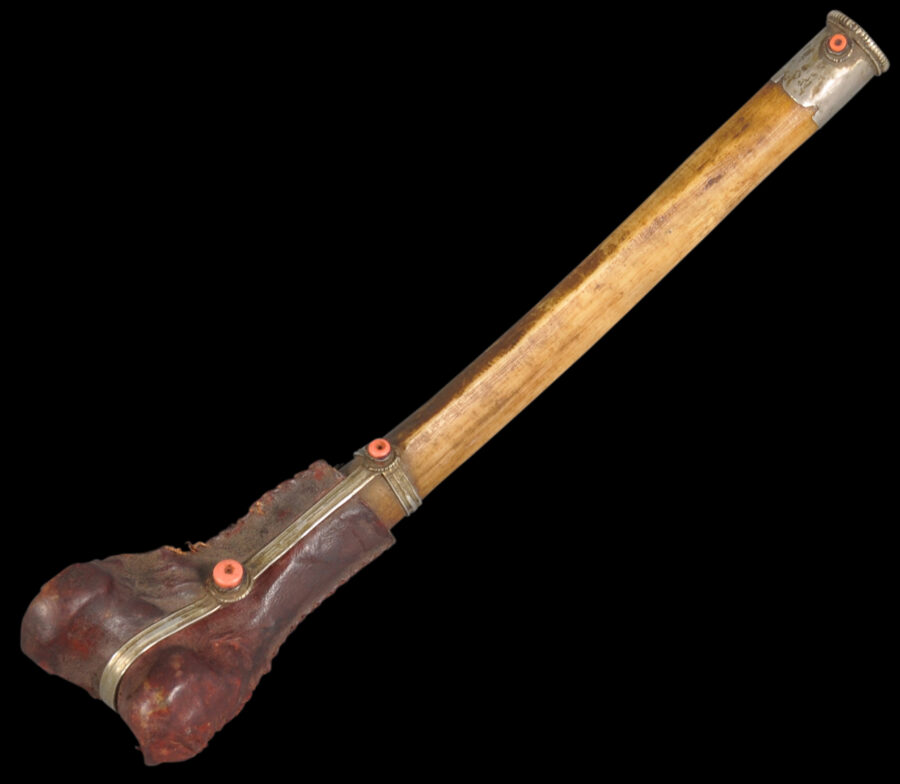This trumpet known as a kangling is made from a human tibia or femur bone. It is clad in leather at one end and also has silver mounts embellished with coral in box settings.
Such trumpets were used in various Tibetan Buddhist esoteric rituals as well as at traditional funeral rituals to subdue demons and other malignant forces.
Bones from respected, pious people tended to be preferred.
The origin of the use of thigh bone trumpets is believed to come from a legend about an Indian hermit who studied Buddhist doctrines on a burial platform. He found that the sharp tone of blowing through a thigh bone awoke his compassion and pushed away feelings of world weariness. The thigh bone trumpet has since been used as a musical instrument in esoteric rituals.
The example here has obvious age and a fine patina. The leather is hand-sewn around the end of the trumpet with leather twine. Over the years, the leather has shrunk and the seam has split open. This explains why the leather on most extant examples actually is missing altogether.
References
Shanghai Museum, Treasures from Snow Mountains: Gems of Tibetan Cultural Relics, Shanghai Museum, 2001.










